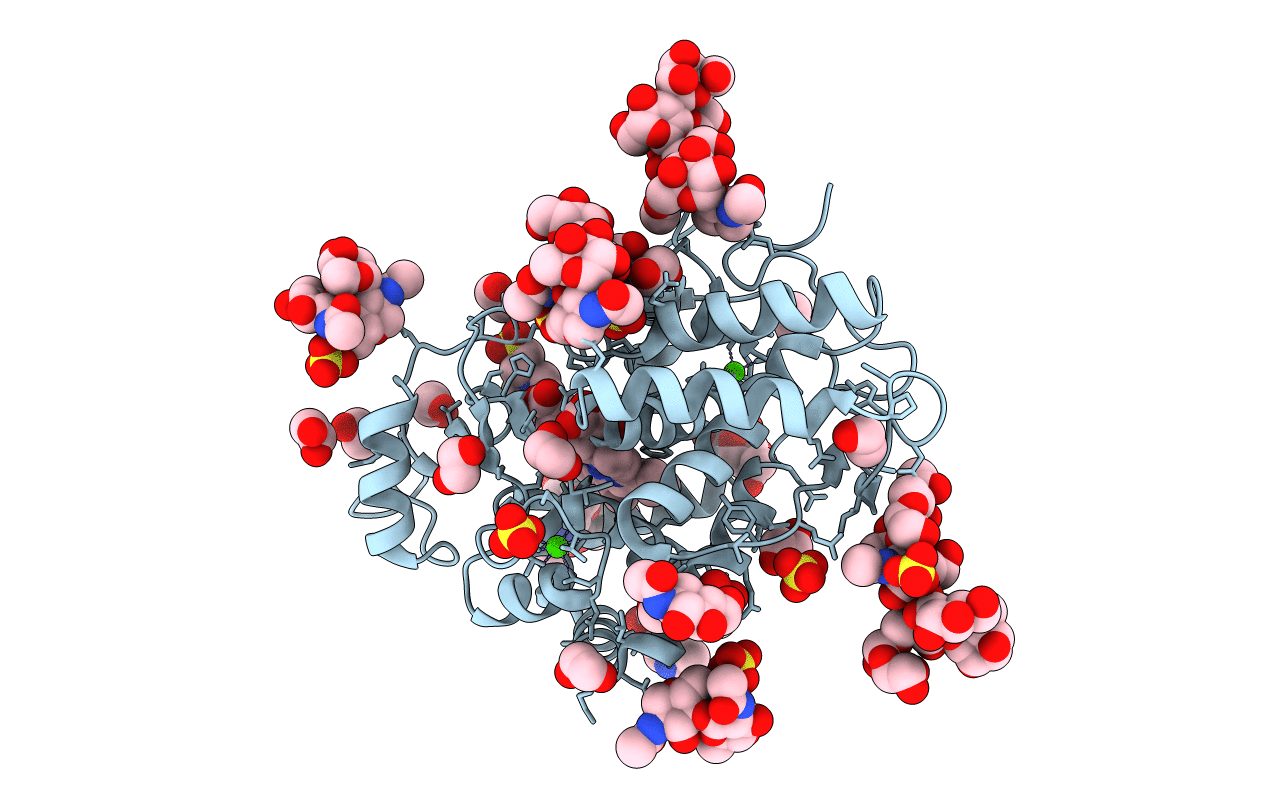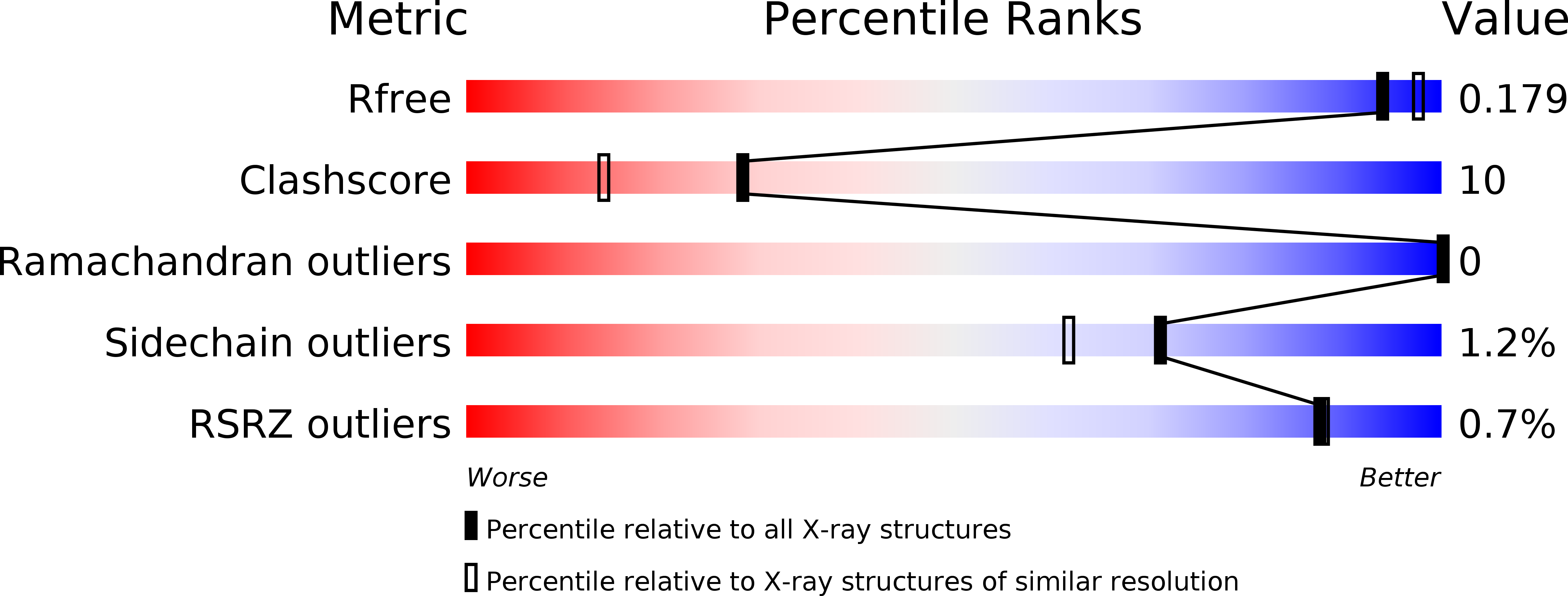
Deposition Date
2009-05-07
Release Date
2009-11-24
Last Version Date
2024-10-30
Entry Detail
PDB ID:
3HDL
Keywords:
Title:
Crystal Structure of Highly Glycosylated Peroxidase from Royal Palm Tree
Biological Source:
Source Organism:
Roystonea regia (Taxon ID: 145709)
Method Details:
Experimental Method:
Resolution:
1.85 Å
R-Value Free:
0.18
R-Value Work:
0.17
R-Value Observed:
0.17
Space Group:
P 31 2 1


